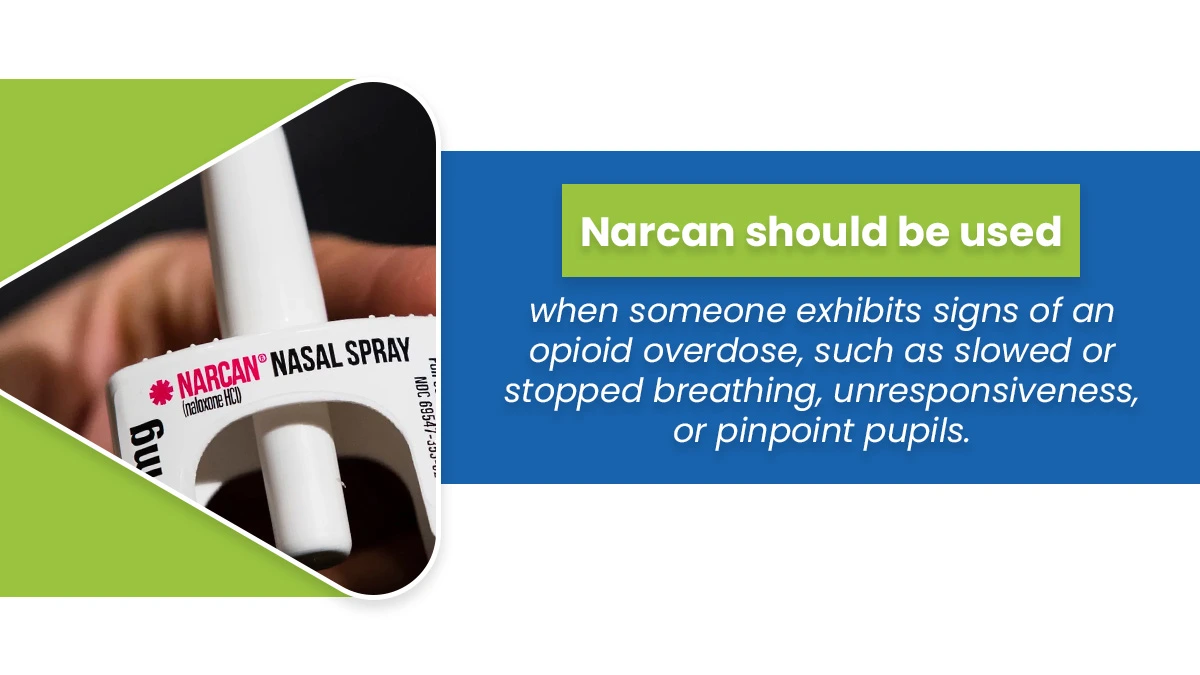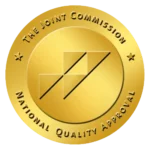How Narcan Works: A Life-Saving Medication
Narcan, also known as naloxone, is a medication that reverses opioid overdoses. It works swiftly by binding to the same part of the brain receptors as opioids but in a different way. When someone overdoses on opioids, their breathing slows or stops.
Narcan swoops in and pushes the opioids away from the receptors, restoring normal breathing. Think of it as a superhero that kicks out the opioids and lets the body’s natural systems take over again. Let’s take a deeper look into how this drug functions.
Key Takeaways
Naloxone, also known as Narcan, plays a vital role in saving lives during opioid overdoses by quickly reversing the dangerous effects of opioids. Here’s what you need to know:
- In 2021, over 106,000 individuals in the United States lost their lives due to drug-related overdoses.
- Narcan works by blocking opioids from binding to certain receptors.
- Naloxone is available in different forms, including intravenous, nasal spray, and auto-injector.
- Narcan should be used when someone exhibits signs of an opioid overdose, such as slowed or stopped breathing, unresponsiveness, or pinpoint pupils.
Discover your recovery journey with The Haven Detox-Little Rock, where hope meets healing. Contact us at (501) 271-3342 today to learn more about our services.

Alarming Opioid Overdose Rates in the US
As per the National Institute on Drug Abuse, in 2021, over 106,000 people in the United States lost their lives due to drug-related overdoses. These overdoses included both illegal drugs and prescription medications or drugs such as opioids. The numbers are startling, with synthetic opioids, mainly fentanyl, causing 70,601 overdose deaths.
This means that more lives were lost to synthetic opioids than ever before. The situation is a serious concern, and it’s important to understand the gravity of this issue.
Role of Naloxone in Opioid Overdoses
Naloxone, an opioid antagonist, plays a vital role in saving lives during opioid overdoses. When someone consumes opioids, they may face dangerous effects. The active drug naloxone works by attaching to opioid receptors in the body, reversing these effects.
It swiftly counteracts respiratory depression and other symptoms, preventing the overdose from turning fatal. First responders, family members, and medical personnel can administer doses of Narcan, a brand name for naloxone, to those in need.
The drug is available as a nasal spray, making it easy to use in emergencies. Recognizing the symptoms of opioid overdose and having naloxone on hand can be the difference between life and death.
Understanding Narcan
Narcan, also known as naloxone, is a life-saving medication also known as pain relief medication. It counters the harmful effects of opioids. When someone takes opioids, like heroin or prescription pain medications, their breathing and heart rate can slow down to dangerous levels.
Narcan steps in as a superhero, rapidly blocking the opioids from binding to certain receptors. This action revives a person’s breathing and helps restore normal functions. It’s administered as a nasal spray, and its active drug, naloxone, quickly kicks opioids out, often within minutes.
This simple science can make a big difference in an emergency, providing immediate help and saving lives.
Forms of Naloxone
Naloxone, also known by the brand name Narcan, is a life-saving drug that comes in different forms for easy use. Here, we’ll explore three common forms:
Intravenous Naloxone
Intravenous naloxone, commonly used by a healthcare provider, is administered directly into a person’s vein. This method ensures rapid action, making it the preferred choice for severe opioid overdose cases, especially in emergency room settings. Its effectiveness in swiftly reversing the effects of opioids is noteworthy.
However, it’s essential to note that administering intravenous naloxone requires trained and skilled healthcare providers due to the specific techniques and precautions involved in this delivery form.
Naloxone Nasal Spray
The Naloxone nasal spray is incredibly user-friendly, designed for ease of use without special training. Much like a nasal decongestant, it’s simple to administer – place it in a person’s nostril and press the device to deliver the dose. This convenience makes it an ideal choice for patients who may need to act quickly during an opioid overdose emergency.
Naloxone Auto-Injector
The Naloxone auto-injector is an easily operated device designed for swift response to signs of opioid overdose situations. Similar to the widely recognized EpiPen for more severe allergic reactions and other adverse reactions, this user-friendly tool simplifies the administration process.
By removing the safety cap and applying it to the thigh, the device automatically administers the life-saving high dose of naloxone. Its simplicity empowers both professionals and patients to act promptly in critical moments.
Moreover, understanding which one suits your situation is a good idea. You can consult with a healthcare professional.
When To Use Narcan
Knowing when to use Narcan, a medication that can reverse the effects of an opioid overdose, is crucial. Identifying the signs of an overdose is the key to timely intervention.
Signs of an Opioid Overdose
An opioid overdose is a medical emergency that takes place when an individual takes too much of an opioid drug, leading to a range of symptoms that can be life-threatening. If you notice someone is experiencing an opioid overdose, it’s crucial to seek immediate medical attention.
Here are some symptoms of an opioid overdose or opioid use disorder:
- Slowed or Stopped Breathing: The person’s breathing becomes dangerously slow or may even stop altogether, especially if they have a high tolerance for opioids and experience low blood pressure.
- Unresponsive: They won’t wake up or respond to stimuli.
- Lips and Nails Turn Blue: A sign of oxygen deprivation.
- Gurgling or Choking Sounds: Indicating airway obstruction.
- Pinpoint Pupils: Unusually tiny pupils.
- Extreme Drowsiness: They can’t stay awake.
- Skin Becomes Pale or Clammy: A result of poor circulation.
- Weak Pulse: A sign of a slowed heart rate.
If you notice these signs in someone who may have used opioids, it’s crucial to use Narcan and seek medical help immediately. Remember, Narcan can be a lifesaver when administered promptly.
How to Use Naloxone
Naloxone is a life-saving medication, and knowing how to use it correctly is essential. There are two common methods: Naloxone Nasal Spray and Naloxone Auto-Injector. Here’s how to use them:
Naloxone Nasal Spray
Naloxone nasal spray (nasal spray version of naloxone) is a medication used to retrieve the effects of an opioid overdose quickly. It is an opioid receptor antagonist, meaning it blocks the action of opioids in the body and can quickly regain normal breathing and consciousness in someone who has overdosed on opioids. Here’s how to use Narcan nasal spray device:
- Prepare: Remove the naloxone nasal spray from its package.
- Position the Person: Lay the affected person on their back. Tilt their head slightly backward for easy application.
- Open Their Nose: Gently insert the nozzle of the nasal spray into one nostril until your fingers touch their nose.
- Spray: Press the plunger firmly to release the medication. Half of the dose goes into one nostril, and the other half into the other.
- Call 911: After administering naloxone, call 911 or seek immediate medical help. The effects may wear off, and the person may need further care.
- Stay With Them: Keep the person under observation and provide reassurance until medical assistance arrives.
Naloxone Auto-Injector
A Naloxone auto-injector is another form of the medication naloxone, which is used to reverse opioid overdoses rapidly. The naloxone auto-injector is administered through the nasal passages; an auto-injector is a device that delivers a single, pre-measured dose of naloxone through an injection into the muscle, typically the thigh.
Auto-injectors are designed to be user-friendly and can be administered by bystanders or first responders. Here’s how to use the naloxone auto-injector for the prompt and effective use of naloxone in an emergency:
- Retrieve: Take the naloxone auto-injector from its packaging.
- Activate: Remove the safety cap and firmly press the injector against the outer thigh.
- Hold in Place: Keep the injector in place for several seconds; it will release the medication automatically.
- Call 911: Dial 911 for emergency assistance.
- Observe: Stay with the person and monitor their condition until help arrives.
These easy-to-use forms of naloxone can save lives when used correctly during an opioid overdose.
Storage and Disposal of Naloxone
Proper storage and disposal of naloxone are essential to ensure its effectiveness and safety. Naloxone should be kept in a safe and accessible place, away from children’s reach. Store it at room temperature, avoiding extreme heat or cold. Check the expiration date regularly, and replace it if it’s expired.
When it comes to disposal, follow these steps:
Check Local Regulations: Be aware of your local regulations for medication disposal. Some areas have specific guidelines for disposing of naloxone.
Dispose of Expired Naloxone: If your naloxone has expired, safely discard it. You can consult your local pharmacy for guidance on proper disposal methods.
Dispose Safely: To discard unused naloxone, follow any local guidelines. If none exist, you can mix the medication with unappealing substances (e.g., coffee grounds or cat litter) in a sealed plastic bag and throw it in the trash.
Protect the Environment: Never flush naloxone down the toilet or drain, as it may harm the environment.
Remember, naloxone saves lives, and ensuring its proper storage and disposal is an important part of using it responsibly.
Frequently Asked Questions (FAQ)
Should you give Narcan to someone awake?
Narcan should not be given to someone awake and not showing signs of an opioid overdose. It is a medication used to reverse the effects of an opioid overdose and can lead to symptoms of withdrawal if administered to someone who doesn’t need it.
Does Narcan work for a methamphetamine overdose?
No, Narcan (naloxone) is not effective for a methamphetamine overdose. Narcan specifically reverses the effects of opioid overdose and does not work for other types of drug overdoses, like methamphetamine. It is important to seek medical help and call emergency personnel for assistance in cases of methamphetamine overdose.
In what situations will Narcan be used?
Narcan is used in situations involving opioid overdoses. When a young adult shows signs of an opioid overdose, such as unconsciousness, shallow or no breathing, and pinpoint pupils, Narcan can be administered to reverse the effects and potentially save their life. It is crucial to call emergency personnel for immediate help and medical care when an opioid overdose is suspected.
Thrive for Recovery With The Haven Detox-Little Rock
If you or someone you know is struggling with opioid addiction, The Haven Detox-Little Rock offers specialized medical treatment to help begin the journey towards a healthier life.
Our professional services encompass comprehensive detox and residential programs, providing the necessary support and care for recovery.
Our focus on personalized care and evidence-based therapies ensures a comfortable and safe journey toward sobriety.
Contact us at (501) 271-3342 today to begin rediscovering a life free from substance dependence.




